
Sumie Japanese Art Art Home Japanese Ink Painting, Sumi E Painting, Korean Painting
The sumi-e tradition of Asian ink painting from teacher to student moves in a continuum, with no end to the journey for truth. In sumi-e, the brush reveals your truth. The process is important. I learned hand to hand by observing her gracefully sway with her brush, dipping into her soul and tracing the ink like a gentle breath of life over.
.jpg)
Sumie Ink Suiboku Painting techniques Strokes Oil Canvas Fresco
The 2000 year-old art form of Japanese brush painting is spiritually rooted in Zen Buddhism. Sumi-e's earliest practitioners were highly disciplined monks trained in the art of concentration, clarity, and simplicity. These early Zen Masters dedicated themselves to the art form with spiritual intensity through long years of serious reflection.
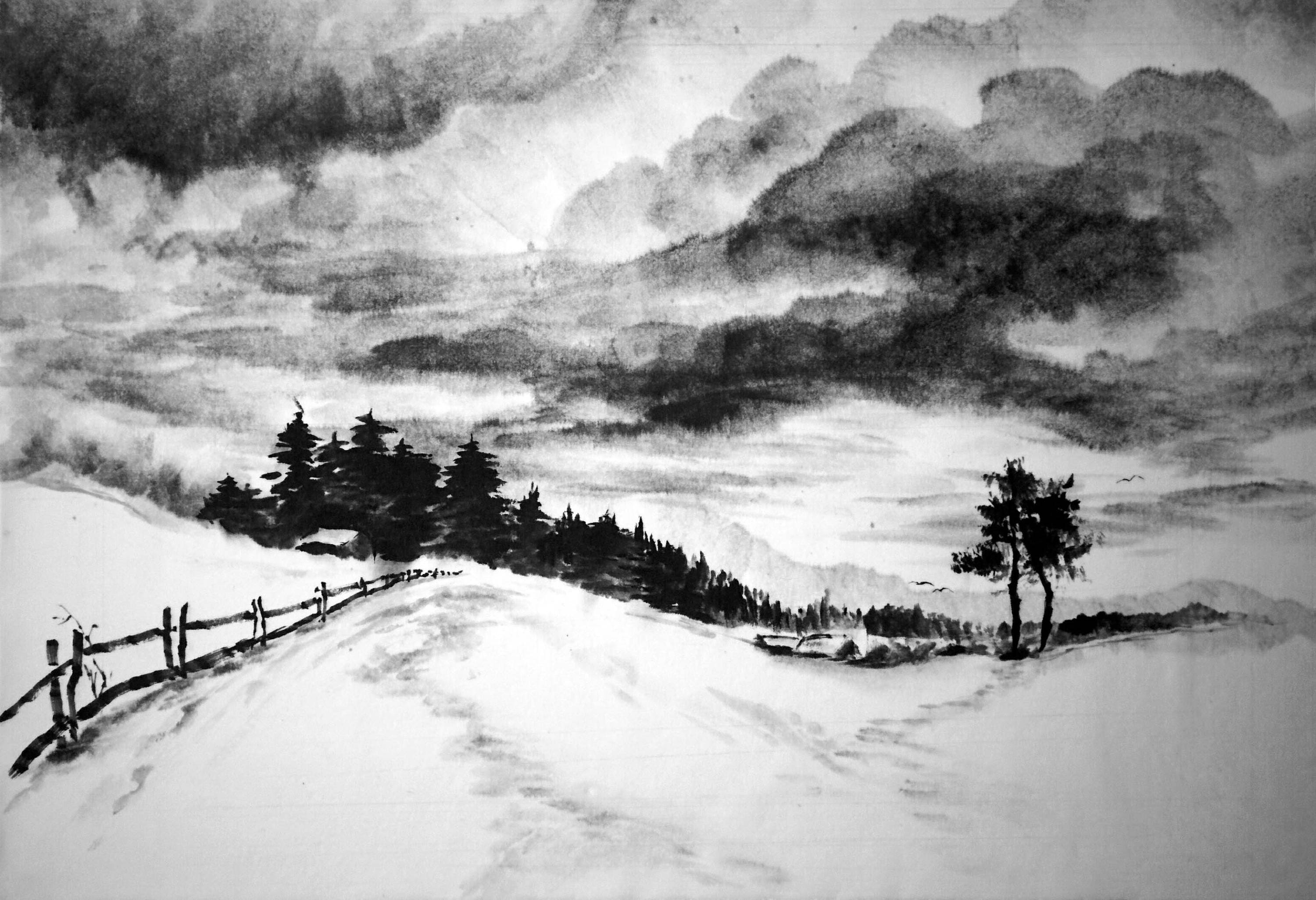
Japanese ink painting Suibokuga Sumie Japanese art Landscape
Sumi-e painting is an ancient art form whose name translates to "black ink painting." It emerged in ancient China and gained popularity in Japan, and its practitioners strive to express.

Sumie Painting 4 Basic Brushstrokes Lesson 2 Create Art with ME
Sumi-e ink painting is not just about capturing the physical appearance of the subject; it is about capturing its spirit. The artist must observe and study the subject, whether it is a landscape, a flower, or an animal, in order to understand its essence. This deep connection with nature is a fundamental aspect of Sumi-e, as it allows the.

Pin by Red Matter on Sumie Chinese landscape painting, Japanese ink painting, Japanese art ink
Sumi-e, the traditional Japanese art of ink painting, is known for its simplicity, elegance, and minimalism. This ancient art form, which originated in China and was later adopted and refined by Japanese artists, focuses on capturing the essence of a subject with just a few brushstrokes.

Suibokuga Japanese ink painting Sumie Floral Spring is coming
In this program, students will learn about the art of Japanese ink painting, known as sumi-e: "sumi" meaning "ink" and "e" meaning "picture." Thousands of ar.

UFAEZU Zen Bamboo and Bird Sumi E Ink Traditional Painting Wall Art Hanging Tapestry Home Decor
Sumi-e #000374. 『大輪華』 ArtworkID:Sumi-e #000223 The image of a large flower. See it on the big screen and feel the power of the large flower. Sumi-e #000305. "Sumi-e, Humans can't draw" is Organic CG in the style of ink painting, with detailed drawings.

Sumi e painting, Japanese ink painting, Japanese painting
simplified Chinese : 水墨画 : 水墨畫 : shuǐmòhuà ); is a type of Chinese painting which uses , such as that used in East Asian calligraphy, in different concentrations. It emerged during the Tang dynasty of China (618-907), and overturned earlier, more techniques.
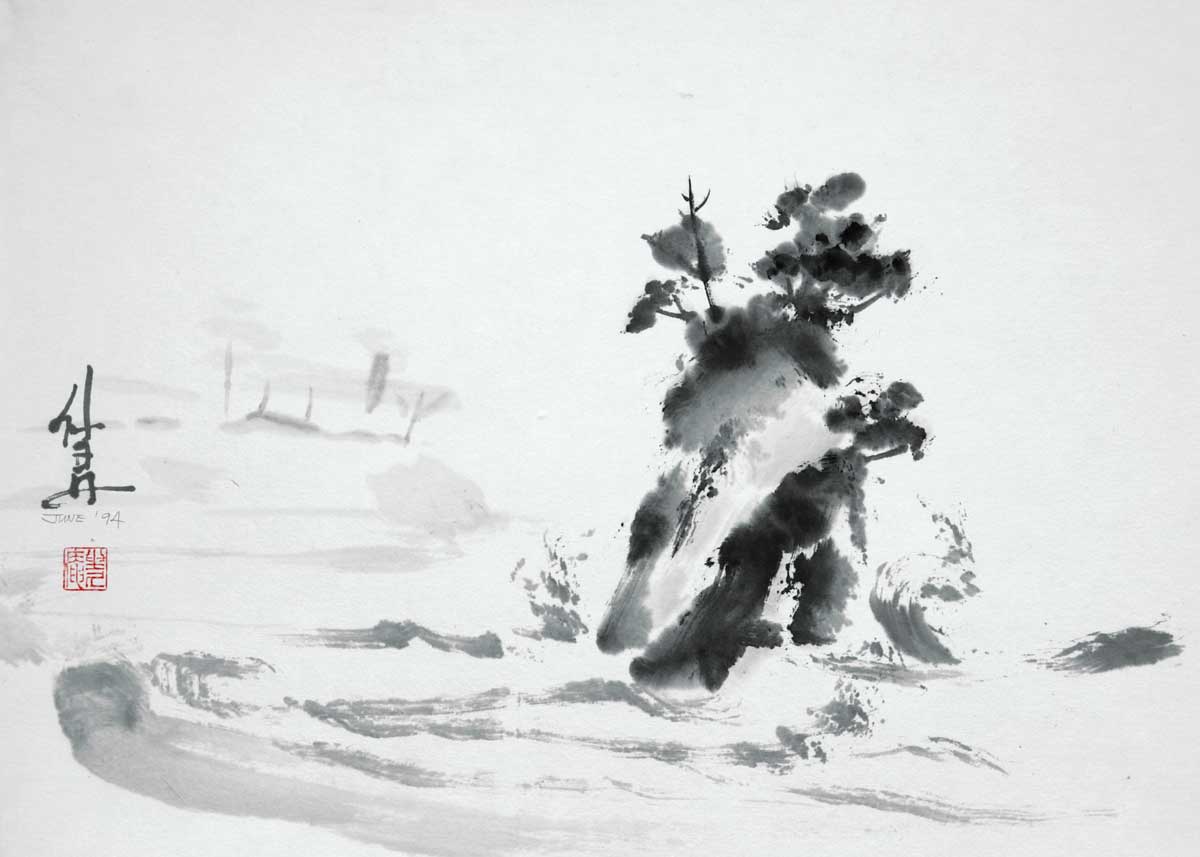
Sumie All You Need to Know About Japanese Ink Painting
What is Ink and Wash Painting / Sumi-e? When reading about Asian ink painting, one will encounter many different terms that describe this special kind of painting method. In Chinese, it is "shuimohua" (水墨画, lit. "water-ink-painting") in Japanese "suiboku-ga" or more colloquially "sumi-e" 墨絵 (lit. "ink painting").

Sumi Bamboo Painting Sumie Ink Drawing Japanese sahelizabeth
67 2 Download Favorite Sumi-e (墨絵風) also known as suiboku-ga, is Japanese monochrome ink painting or 'ink wash painting'. Sumi-e paintings in essence are beautiful forms of art, and they traditionally encompass philosophy as well. The origin of sumi-e paintings have roots in Chinese calligraphy, which can be noted by the similar brush strokes.

Sumie Japanese Ink Painting I with Takumasa Ono Bagri Foundation celebrating Arts and
The Japanese term "sumi" means "black ink", "e" means "painting". It indicates one of the art forms in which subjects are painted with black ink in all possible gradations ranging pure black to the lightest shades achievable by dissolving ink in water. However, this does not mean that everything painted in this way deserves to be called sumi-e.

Japanese Ink Painting Suibokuga,Sumie Brush painting Pink Flowers, Rice Paper painting
Sumi-e, which means "ink painting" in Japanese, is a traditional art form that originated in China and was later adopted and refined by Japanese artists. What sets Sumi-e apart from other forms of painting is its emphasis on minimalism. In Sumi-e, the artist uses only black ink and a brush to create their artwork.
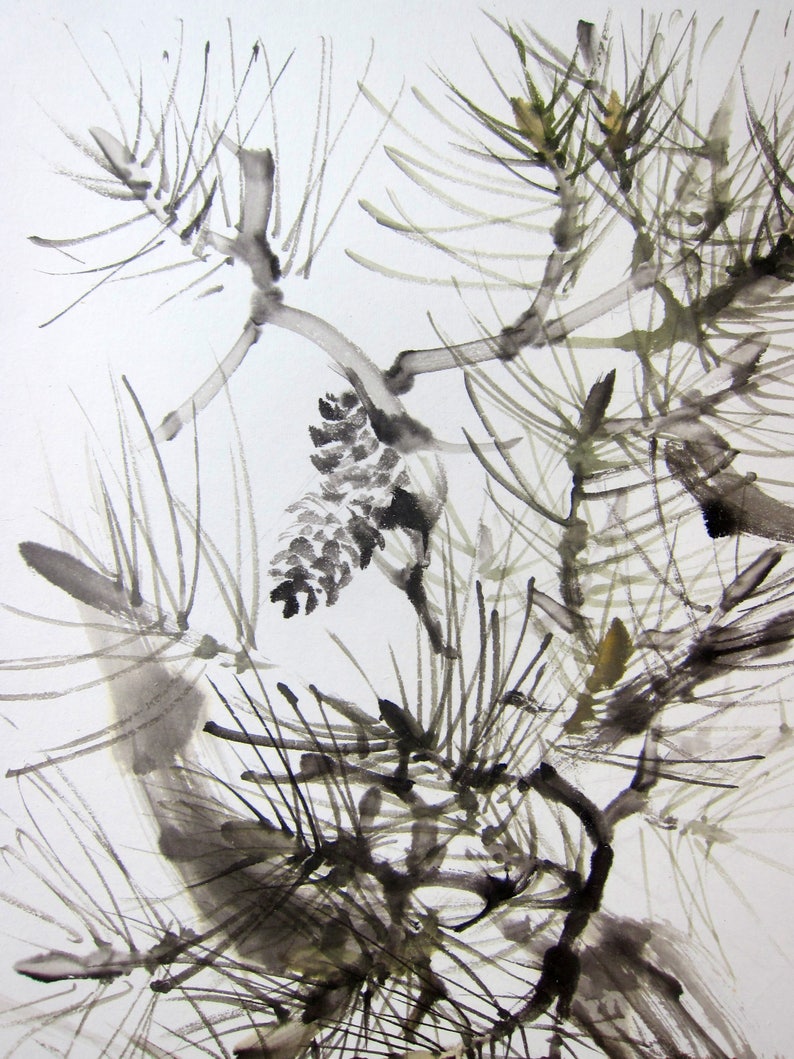
Sumie Ink Painting Japanese Hand painted Asian watercolor Etsy
Introduction to Sumi-e Painting: 5 Basic Ink Techniques Step into a journey of self-discovery through the ancient art of Sumi-e painting.

Ella Saridi Japanese Ink Painting Sumie Suibokuga Japanese ink painting, Japanese art, Ink
The art of Japanese Sumi-e painting is a traditional form of ink painting that has been practiced for centuries. It is a unique art form that combines the use of ink, to create beautiful and expressive works of art.
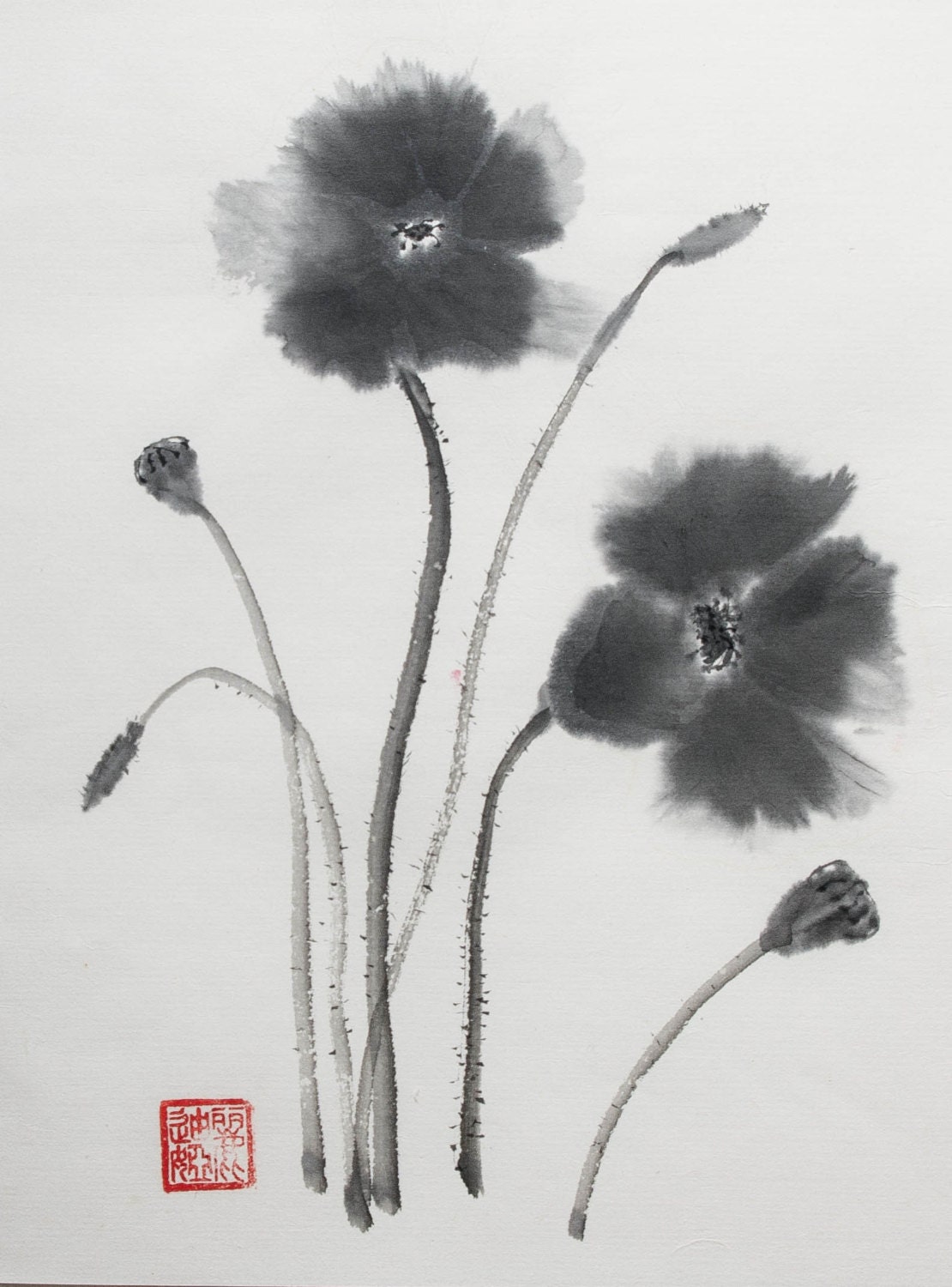
Japanese Ink Painting Suibokuga Sumie Chinese Brush
Japanese ink painting, or sumi-e, is the embodiment of Japanese aesthetics. Using just simple black ink and carefully curated white space, sumi-e captures the timeless beauty and complexity of the natural world.
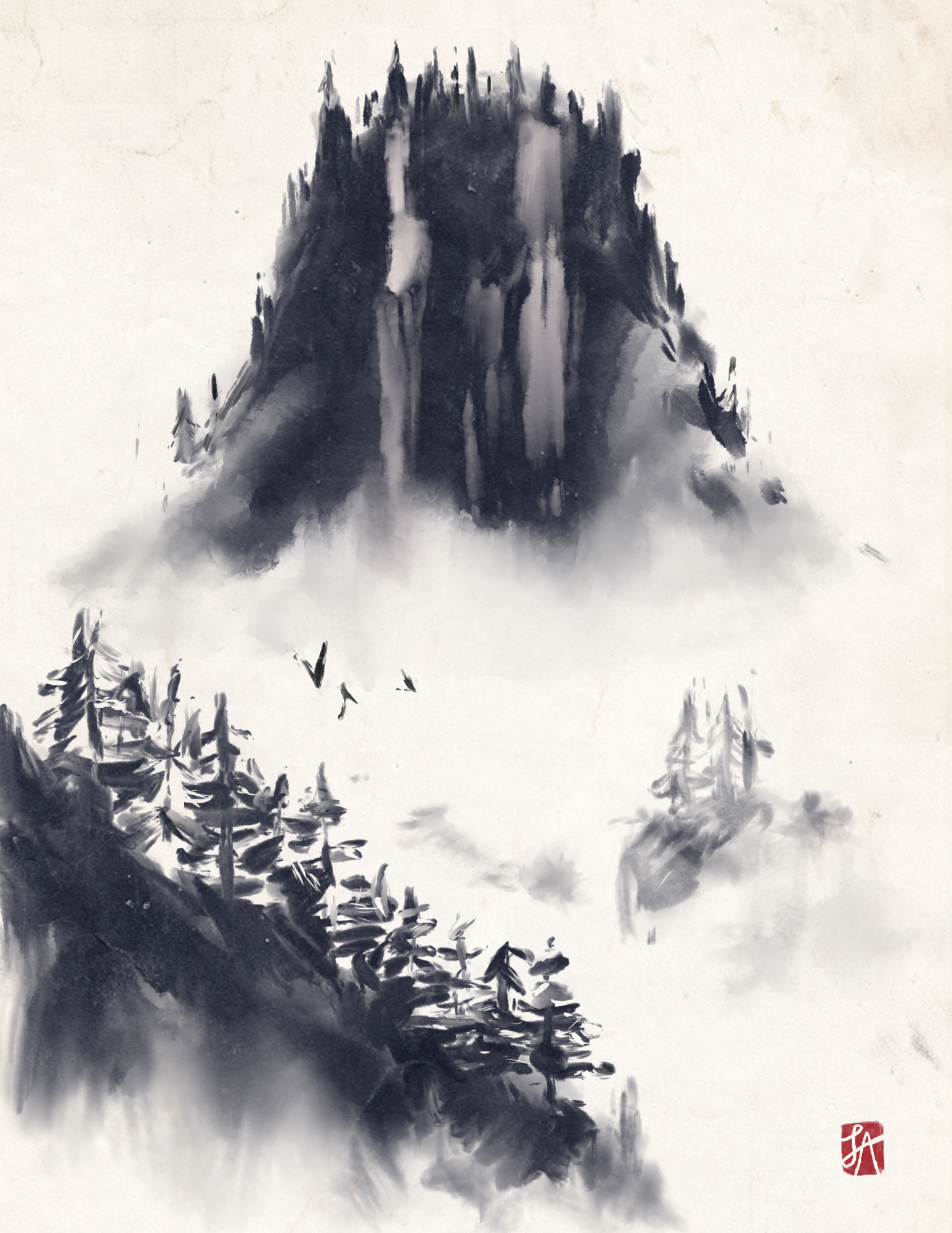
How To Create a Beautiful Sumi e Painting in Procreate » Ink Gang Boss
Connect with Japanese zen philosophy and let your energy flow through expressive ink brush strokes as Japanese artist, Koshu, guides you through this ancest.